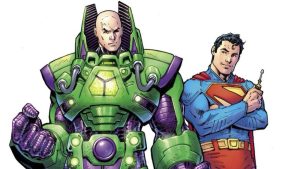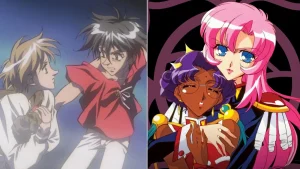Marvel and DC have had several crossovers over the years, with their most recent having Batman meet Deadpool. These cross-company team-ups are always fun to read because they provide great character interactions that we normally don’t see. However, on October 12, 1995, DC and Marvel had one of their greatest crossovers ever: Spider-Man and Batman: Disordered Minds. This one-shot comic takes place in an alternate universe where DC and Marvel heroes co-exist. The story was the very first time these characters ever met, and it was all fans of both franchises could have wanted and more! It had action, humor, and provided deep character explorations while Spider-Man and Batman joined forces to defeat Carnage and the Joker.
Spider-Man and Batman are two of the most popular superheroes of all time, so seeing the two team up to defeat two of their most ruthless enemies was a recipe for success. The story highlights the similarities and differences of the personalities and motivations of the Wall-Crawler and the Caped Crusader. Additionally, the story offers a nuanced look at Carnage and the Joker, and how the two operate on different levels of insanity and sadism. All these elements help to elevate Spider-Man and Batman: Disordered Minds into one of the best crossovers DC and Marvel have ever done.
Spider-Man and Batman: Disordered Minds begins with Spider-Man overseeing the imprisonment of the Symbiote-infused and sadistic serial killer known as Carnage. A woman named Cassandra Briar intends to cure Carnage of his deranged mental condition by implanting a computer chip into the psychopath’s brain to make him docile. She conducted the experiment, and it seemed to have worked at pacifying Carnage. Cassandra’s next stop is Arkham Asylum where the procedure is performed on the Joker. Naturally, the optimism that these two villains could be cured was premature because Carnage used his Symbiote to destroy the computer chip in his brain. After breaking free, Carnage dismantles the chip controlling the Joker, and two of the most sadistic serial killers in comic books team up because they view each other as kindred spirits that want to spread madness and death.
Spider-Man meets Batman when he travels to Gotham to keep an eye on Carnage after his supposed “reconditioning.” When Carnage and the Joker unite, Spider-Man is there to join Batman and form an alliance to stop them. Meanwhile, Carnage and Joker’s partnership quickly breaks down because of their conflicting methods and viewpoints. Joker enjoys grandiose schemes, whereas Carnage prefers quick and brutal violence. These differences further become apparent as Batman and Spider-Man confront and battle the villainous duo. When Carnage tries to kill Batman, Joker proclaims that only he gets to kill the Dark Knight and threatens to kill everyone with a deadly virus. In the end, Batman manages to defeat Carnage, and Spider-Man stops the Joker’s plan. With the villains beaten, Spider-Man and Batman thank each other for their help, and part ways.
Spider-Man and Batman are both street-level heroes. However, the Wall-Crawler’s colorful and jovial personality starkly contrasts with the Dark Knight’s dark and brooding nature. This polar-opposite dynamic is always fun to read about, and it’s great to see Batman have to deal with Spider-Man’s wise-cracking nature. Their conflicting personalities lend a lot of great comedy to the story, and Spider-Man and Batman work well off of each other. Batman even shows reluctance to work with Spider-Man because he believes that the Wall-Crawler wouldn’t be able to handle the bleakness of Gotham. Spider-Man refuses to take no for an answer because he understands that Carnage and the Joker need to be stopped. Eventually, Batman recognizes that he needs Spider-Man’s in-depth knowledge of Carnage to take him down.
Aside from such surface-level differences, Spider-Man and Batman are shown to have similar psychological issues. Throughout the story, both Spider-Man and Batman are haunted by the traumatic events that motivated them to become crimefighters. Spider-Man remembers the murder of Uncle Ben, who was killed by a burglar whom the hero had callously allowed to escape several hours before. Batman, similarly, is tormented by the night his parents were gunned down by the petty thief, Joe Chill. Both Spider-Man and Batman feel tremendous guilt and rage for being unable to save their loved ones from random acts of violence by common criminals. We see through their internal monologues how it’s this guilt and anger that drives these men to be heroes and to save people.
These internal monologues help to cement why these heroes are so similar underneath the surface, and it makes their team up all the more organic and gratifying.
Part of the brilliance of this crossover is how integral the villains Carnage and the Joker are to the story’s themes and the character arcs of the heroes. Carnage and the Joker at first glance seem like they would be a match made in heaven: two sadistic mass murderers. However, over time the two are shown to be very different. Carnage sees Joker as an over-dramatic show-off who takes too long in killing people. Joker, in contrast, sees Carnage as a one-note killer with no sense of style or substance. Their contrasting personalities come to a head when the Joker threatens to kill everyone with a deadly virus, and Carnage panics in fear. This moment incites deep introspection for both Batman and Spider-Man that pushes them to their psychological limits.
Batman’s character arc centers around how he views Joe Chill, and by extension Carnage, as an ever-present and sadistic grim reaper responsible for killing his parents. Furthermore, Batman is reminded of how scared and helpless he was as a child. When Carnage was about to kill him, the Dark Knight’s traumatized psyche caused him to perceive Carnage as though death itself had returned to kill him. However, when Batman witnesses Carnage panicking when the Joker threatens to kill them all, the hero snaps out of his delusion. He recognizes that Carnage is not death, but is a scared child paralyzed by fear. In contrast to Carnage’s terror, Batman stands tall and knocks Carnage out, allowing himself to not let his fear control him anymore. The scene brilliantly highlights Batman’s lifelong battle against his trauma and how he tries to heal and rebuild himself into something better.
Spider-Man’s story revolves around his constant struggle to fight against evil while desperately trying to maintain a sense of hope. The rampant crime and callous bystanders that Spider-Man witnesses everywhere in Gotham tests his resolve and triggers memories of his Uncle Ben’s murder. The Wall-Crawler reaches his limit when the Joker is willing to kill the entire city. In this moment, Spider-Man sees the Joker as the personification of everything the hero fights against: chaotic madness that destroys everything good in the world. Spider-Man even considers killing the Joker to stop him for good. However, Spider-Man is able to remind himself that he can’t give into anger and must be a symbol of hope for others. It’s a powerful moment that highlights why despite Spider-Man having so much internal pain, he still presents such a kind and hopeful personality to the outside world.
Spider-Man and Batman: Disordered Minds is the perfect crossover story for fans of both the Caped Crusader and the Wall-Crawler. Most crossovers only focus on having fun action scenes, with very little substance or character exploration. In contrast, this story uses the crossover to offer deep character studies into both the heroes and villains that highlight their unexpected similarities and differences in a way that is realistic and engaging. We see how although Batman and Spider-Man may seem like polar opposites, they are really kindred spirits with similar backstories and motivations. Furthermore, facing such nightmarish villains pushes both Batman and Spider-Man to confront their traumas and have them self-reflect as to why they must move past their fear, guilt, and anger to be better heroes for the sake of others.
The post 30 Years Ago, Spider-Man and Batman Teamed Up to Take on Comics’s Greatest Villains and It’s Still One of the Best Crossovers Ever appeared first on ComicBook.com.




